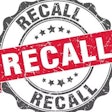After years of deliberation, the Association of American Feed Control Officials (AAFCO) passed its Model Good Manufacturing Practice Regulations for Feed and Feed Ingredients at its annual meeting in August. The new regulations will apply to all commercial feeds, including petfoods. While not currently posted on AAFCO's website, they should appear in the 2010 AAFCO Official Publication due out in a couple of months.
What do these new regulations portend for petfood manufacturers?
Monitoring production
Historically, enforcement efforts pertaining to the adulteration of animal feeds have focused on monitoring the finished product. For example, states routinely collect samples for laboratory analysis for Salmonella, mycotoxins and other potential adulterants in feed or feed ingredients.
A product found to contain violative levels of a contaminant could be subject to enforcement action as an adulterated feed. However, comparatively little regulatory effort has been spent to monitor the conditions of production that may have led to the contamination in the first place.
The US Food and Drug Administration (FDA) has Good Manufacturing Practice (GMPs) regulations in place for foods for human consumption (Title 21 Code of Federal Regulations, CFR, Part 110). GMPs are also required for medicated feeds-animal feeds containing an approved drug (21 CFR Part 225)-and manufacturing of canned petfoods (21 CFR Part 113). However, these new regulations will be the first to apply to all animal feeds and petfoods.
GMP requirements
The new regulations stipulate basic requirements for the production of feeds with the objective of minimizing the risk of adulteration. "Adulteration" is defined more narrowly than in the AAFCO Model Bill, focusing on the aspects of the definition most directly related to feed safety.
For example, a feed containing excessive amounts of viable weed seeds may be adulterated under the Model Bill but not under the Model GMP Regulations. Medicated feeds would also be exempt, but as mentioned, GMPs in FDA regulations already apply to those products.
Aspects of feed production covered by the Model GMP Regulations include:
- Training and hygiene of personnel;
- Construction and design of buildings and grounds;
- Building maintenance and housekeeping;
- Effective pest control;
- Proper use and storage of chemicals;
- Equipment suitability, function and calibration;
- Inspection and handling of incoming ingredients;
- Manufacturing, packaging, labeling, testing, storage and transport of finished product; and
- Adequate record keeping.
The requirements stipulated in the GMP regulations are necessarily nonspecific, since they must apply to a wide range of facilities. For example, the storage and transport of finished product would be very different for a manufacturer of a chemical such as salt or calcium carbonate compared to that for a dry extruded petfood manufacturer. Effective pest control measures would be different at a rendering facility compared to a home kitchen used to bake dog treats.
Impact on petfoods
The requirements under the Model GMP Regulations reflect
what already should be prudent practice. Therefore, petfood
manufacturers that already have good process controls in place
should be minimally impacted.
Now, though, what constitutes sound procedures will be subject
to review by state feed inspectors. Failure to meet the GMP
requirements could be used as de facto evidence that a petfood
was adulterated and subject to enforcement action,
notwithstanding or in lieu of a negative laboratory finding for
adulteration.
Because the specific requirements in the regulations are vague, that means they are also potentially subject to variable interpretation. What may appear to be adequate handling of incoming ingredients from the company's perspective may be different from what the inspector considers sufficient. Further, it can be expected that different states will use dissimilar criteria in judging compliance. Let's hope AAFCO's plan for a guidance document intended to accompany these regulations will mitigate inconsistencies.
No enforcement authority
Like all other AAFCO documents, the Model GMP Regulations do not have enforcement authority in and of themselves. Rather, individual states must adopt these models as part of their own regulations before they can impose them on manufacturers in their respective jurisdictions. The AAFCO membership vote on this matter in August was not unanimous. Therefore, it is likely some states will choose not to adopt or enforce GMP regulations, at least not in this form.
One petfood manufacturer commented that some companies may be at a disadvantage solely by virtue of having its facility in a state with more aggressive enforcement activity than others. However, it is anticipated that FDA will also propose federal GMPs for petfoods in response to the mandate to institute interstate process control requirements under the FDA Amendments Act of 2007. While not published for comment as of this writing, a reasonable expectation would be that FDA's GMPs will mirror AAFCO's.
















